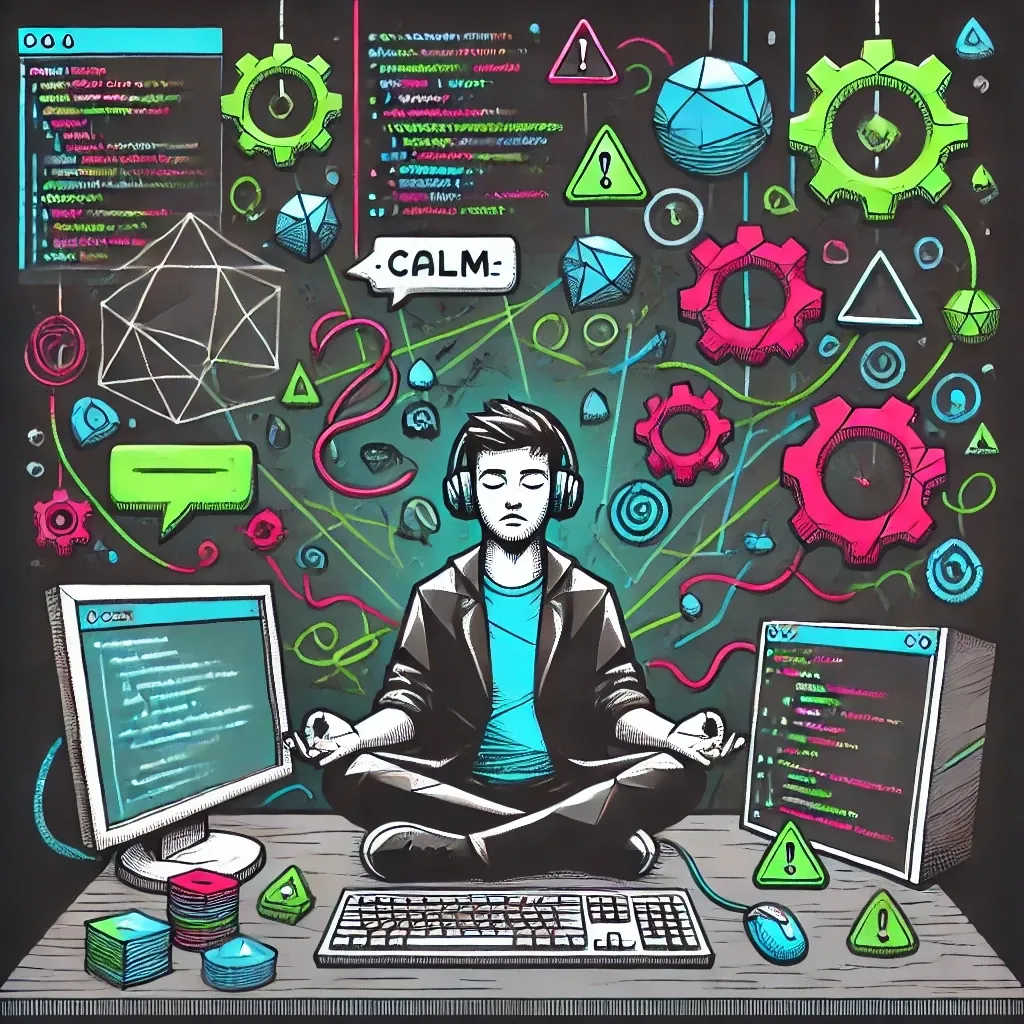Staying Calm and Adaptable Under Dev Pressure: Mastering Resilience
Learn how to stay calm and adaptable under pressure as a developer with mindfulness, physical activity, and a growth mindset.

Working as a developer can be a pressure cooker. Constantly shifting requirements, unrealistic deadlines, and the infamous "everything is on fire" emergencies are par for the course. The ability to stay calm and adaptable under these conditions isn’t just a nice skill to have; it’s a survival mechanism.
Real magic happens when you transform that pressure into focus, composure, and even growth. So, how do you keep your cool and roll with the punches in a fast-paced development environment? Let’s explore some powerful techniques to help you stay calm, adaptable, and ready to handle whatever comes your way.
🔑 Key Takeaways 🔑
- Mindfulness and relaxation techniques can help you stay grounded and reduce anxiety.
- Physical activity and positive thinking are essential for managing stress and fostering adaptability.
- Growth mindset and emotional intelligence pave the way for resilience under pressure.
Techniques for Staying Calm Under Pressure
Mindfulness and Grounding Techniques
Mindfulness is more than just a trend—it’s a powerful tool to help you stay present when stress levels start to rise. One popular approach is the 5-4-3-2-1 grounding technique, which involves using your senses to focus on your surroundings and bring your mind back to the present moment. For instance, notice five things you can see, four things you can touch, three things you can hear, two things you can smell, and one thing you can taste. This simple practice can quickly interrupt anxious thoughts and bring you back to the here and now—a valuable tool during intense meetings or a chaotic code review.
Another effective relaxation method is progressive muscle relaxation (PMR). This technique involves tensing and then relaxing different muscle groups throughout your body, which helps release built-up tension. Whether you’re dealing with a stubborn bug or a tight deadline, PMR can help you let go of physical stress, which often mirrors mental anxiety.
Deep Breathing
Deep breathing exercises are another way to stay calm when you’re feeling overwhelmed. It might sound basic, but focusing on your breath can trigger your body’s natural relaxation response. Try inhaling deeply through your nose for a count of four, holding for four, and then exhaling slowly through your mouth for a count of four. Repeat this a few times to calm your nervous system and regain control during high-pressure situations.
Physical and Mental Strategies for Adaptability
Visualization and Positive Affirmations
Visualization is all about seeing yourself succeed before you even start. Close your eyes and picture yourself navigating a challenging situation with confidence. Imagine successfully deploying that complex feature or handling an unexpected issue smoothly. Your brain often can’t tell the difference between real and imagined experiences, which makes visualization a great way to prepare mentally and boost your confidence.
Positive affirmations are another tool to keep your mindset in check. Phrases like, “I can handle whatever comes my way,” or “I am adaptable and resilient” might feel a little cheesy at first, but they work. Repeating positive affirmations helps shift your mindset from doubt to confidence, which is crucial when the pressure starts to build.
Physical Movement
Sometimes the best way to reset is to move. Physical activity, whether it’s a brisk walk, a few stretches, or even a quick set of push-ups, can significantly reduce stress levels. Exercise releases endorphins, your body’s natural mood lifters, which can help clear your mind and provide a sense of control. If you’re stuck in a high-stress situation—like when production goes down—taking just a few minutes to move your body can do wonders for your focus and stress management.

Developing Resilience and Adaptability
Cultivate a Growth Mindset
The concept of a growth mindset is all about seeing challenges not as obstacles but as opportunities to learn and grow. Instead of fearing failure, embrace it as a chance to improve. Did a deployment fail? Great—what can you learn from it? The key to resilience is viewing setbacks as part of the journey rather than roadblocks. When you shift your mindset in this way, it becomes easier to adapt, even under intense pressure.
Time Management and Self-Care
Adaptability isn’t just about handling what happens at work; it’s also about how you take care of yourself outside of work. Time management is crucial for maintaining a sense of balance and avoiding burnout. Break your tasks into manageable chunks, set realistic goals, and don’t be afraid to ask for help if you need it. Outside of work, make time for activities that recharge you—whether it’s exercise, a hobby, or just getting a full night’s sleep. Self-care is the foundation that makes staying calm and adaptable possible.
Emotional Intelligence
Emotional intelligence is the unsung hero of stress management. Understanding your emotions and knowing how to respond rather than react can make all the difference when the pressure’s on. For example, instead of letting frustration dictate your actions when a colleague introduces last-minute changes, pause, process your emotions, and approach the situation with a clear head. By managing your emotions effectively, you’ll be better equipped to stay calm and make informed decisions during stressful times.
Conclusion
Staying calm and adaptable as a developer is an art, and like any art, it takes practice. Mindfulness, visualization, physical activity, and a growth mindset are all tools you can use to handle pressure and even turn it into an opportunity for growth. The next time your project takes an unexpected turn or a deadline looms large, remember: adaptability isn’t just about coping; it’s about thriving. So take a deep breath, get moving, and tackle that challenge head-on—you’ve got this.
Ready to master staying calm under pressure? Start with one of these techniques today and see the difference it can make in your work.




